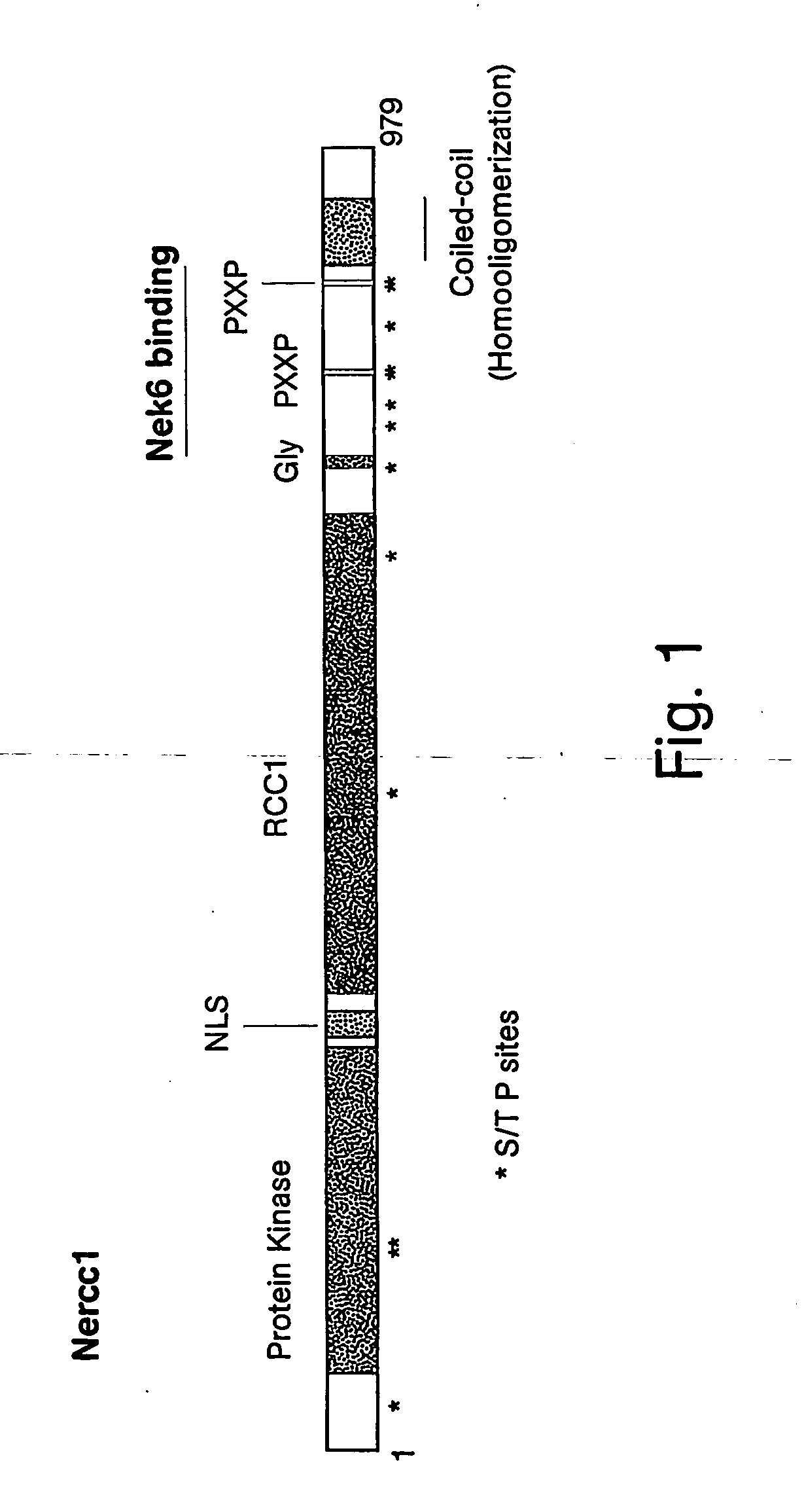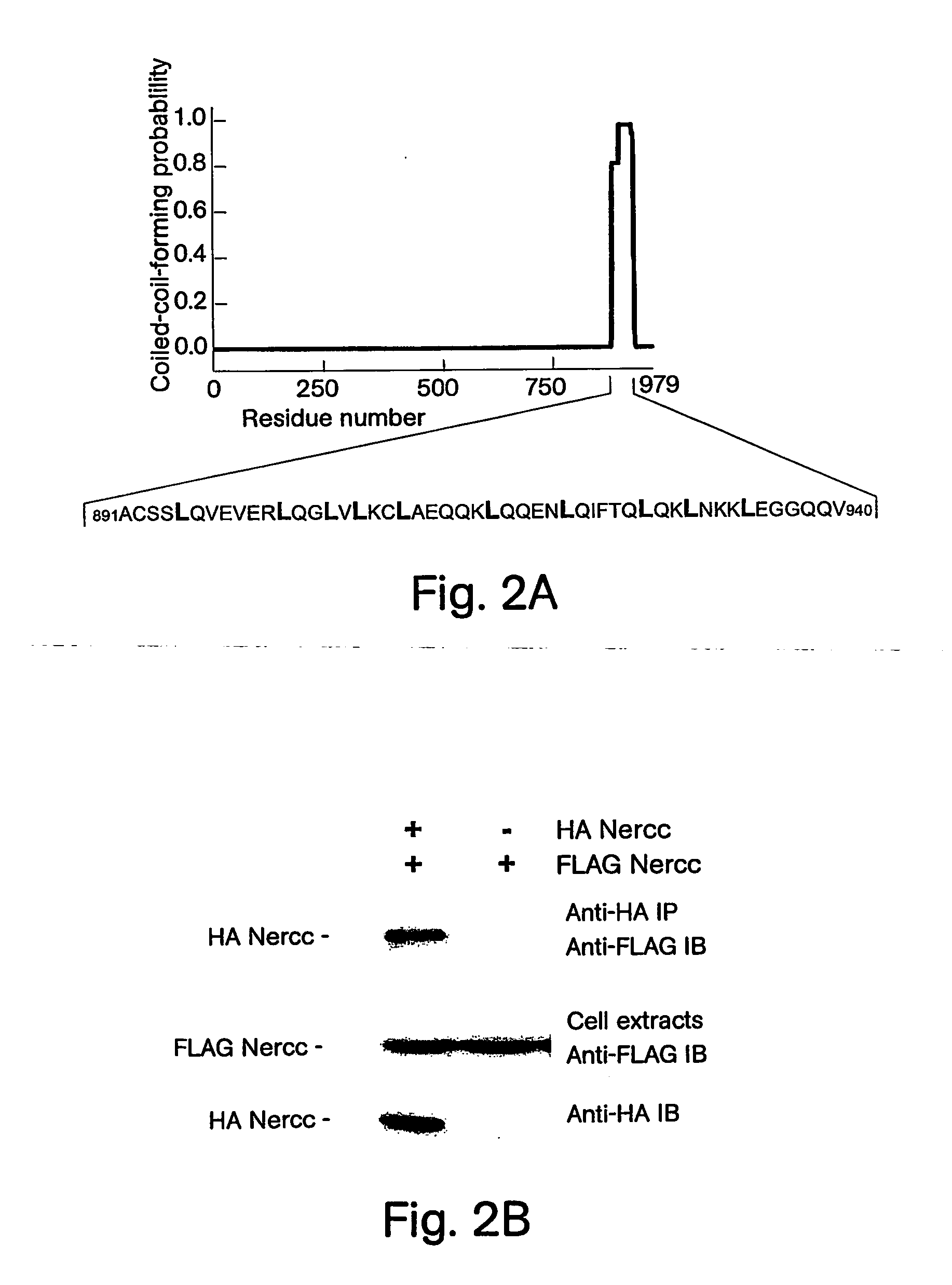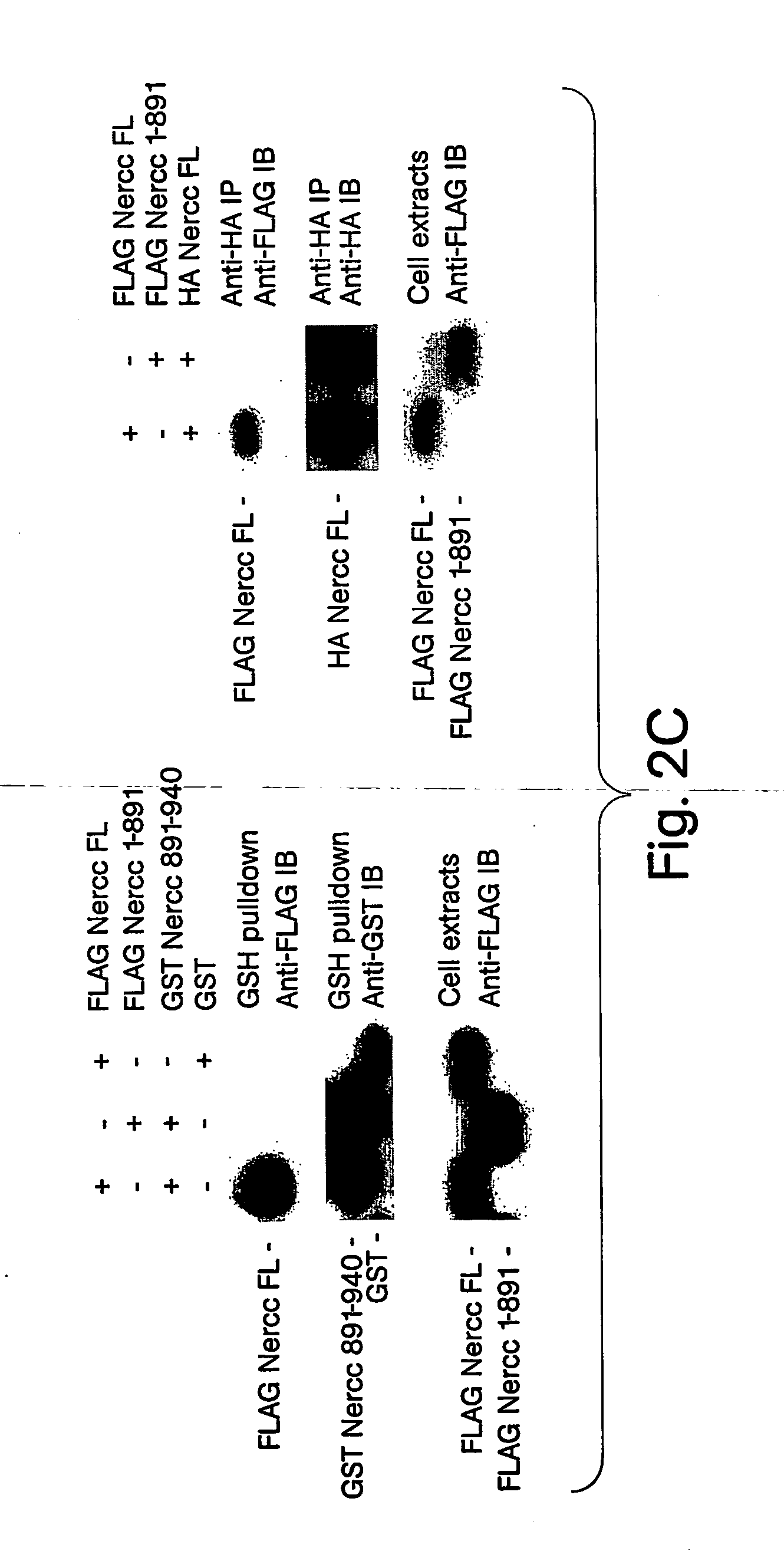Identification of inhibitors of mitosis
a technology of mitosis and inhibitors, which is applied in the field of identification of anticancer and antimicrobial compounds, can solve the problem that none of these neks has emerged as a bona fide functional homologue of nima
- Summary
- Abstract
- Description
- Claims
- Application Information
AI Technical Summary
Benefits of technology
Problems solved by technology
Method used
Image
Examples
example 1
Protein Sequencing, cDNA Cloning, Manipulations, Assays, and Nomenclature for Derivatives of Nercc1, Nek6, and Nek7 Kinase Proteins
[0131] Sequence analysis of a tryptic digest of Nercc1 kinase (p120 protein) was performed at the Harvard Microchemistry Facility at Harvard University, Cambridge, Mass., by microcapillary reverse-phase HPLC nano-electrospray tandem mass spectrometry (μLC / MS / MS) on a Finnigan LCQ quadrupole ion trap mass spectrometer. Online, data-dependent scans enabled a determination of charge state and exact mass, followed by the acquisition of tandem mass spectra. The identification of spectra corresponding to known peptide sequences in the NCBI databases was enabled with the algorithm Sequest, followed by manual confirmation.
[0132] A cDNA encoding Nercc polypeptide fragments (amino acids 1-308 and amino acids 1-391 of SEQ ID NO:2) was obtained by polymerase chain reaction (PCR) using the EST AI961740 as template and primers having the following sequences, each co...
example 2
Analysis of Cloned cDNA Encoding Nercc1 Kinase
[0204] Immunoaffinity purification of a FLAG Nek6 polypeptide overexpressed in HEK293 cells results in the recovery of an associated 120 kilodalton (kDa) polypeptide (p120). Incubation of the FLAG Nek6 immunoprecipitate with Mg2+ plus [γ-32P]ATP yields 32P incorporation into both Nek6 and p120 to a similar extent, suggesting that p120 is a substrate for Nek6, a protein kinase itself, or both. The 120 kDa band was excised, subjected to tryptic digestion in situ, microcapillary reverse-phase HPLC and peptide sequence analysis by electrospray ionization mass spectrometry. Spectra corresponding to multiple peptide sequences were identified on each of three successive open reading frames (ORFs) predicted by GENESCAN (Burge et al., J. Mol. Biol., 268: 78-94 (1997)) on the human BAC clone 201F1 (AC007055). Although none of the predicted ORFs encode a polypeptide whose mass approaches 120 kDa, the sum of their molecular masses is close to this ...
example 3
Expression of Nercc mRNA and Polypeptide
[0210] More than 150 human ESTs corresponding to the 3′ untranslated segment of the Nerco cDNA are present in the NCBI database, as well as approximately 100 ESTs corresponding to the 5′ untranslated and coding region. The variety of tissues from which these ESTs were derived indicates that Nercc is widely expressed. In fact, Nercc DNA fragments were amplified by PCR of first strand cDNA prepared from human heart, brain, placenta, liver, skeletal muscle, kidney, and pancreas. Total mouse RNA isolated from various tissues, hybridized with a Nercc probe, demonstrating the expression of one or two Nercc mRNA species (5.3 and 8.1 kb) in all tissues examined.
[0211] Polyclonal anti-peptide antibodies, which were raised against synthetic peptides corresponding to Nercc amino acids 3-18 of SEQ ID NO:2 (N1 antibody) and 843-858 of SEQ ID NO:2 (C1 antibody), were used to detect the expression of recombinant and endogenous Nercc kinase polypeptides. Ex...
PUM
| Property | Measurement | Unit |
|---|---|---|
| time | aaaaa | aaaaa |
| pH | aaaaa | aaaaa |
| pH | aaaaa | aaaaa |
Abstract
Description
Claims
Application Information
 Login to View More
Login to View More - R&D
- Intellectual Property
- Life Sciences
- Materials
- Tech Scout
- Unparalleled Data Quality
- Higher Quality Content
- 60% Fewer Hallucinations
Browse by: Latest US Patents, China's latest patents, Technical Efficacy Thesaurus, Application Domain, Technology Topic, Popular Technical Reports.
© 2025 PatSnap. All rights reserved.Legal|Privacy policy|Modern Slavery Act Transparency Statement|Sitemap|About US| Contact US: help@patsnap.com



